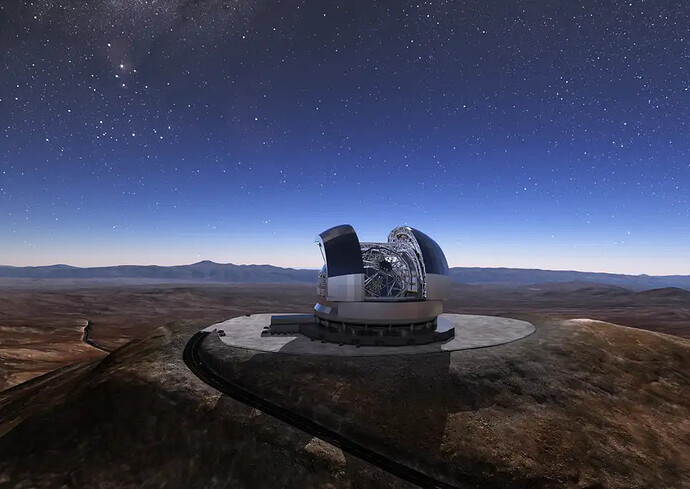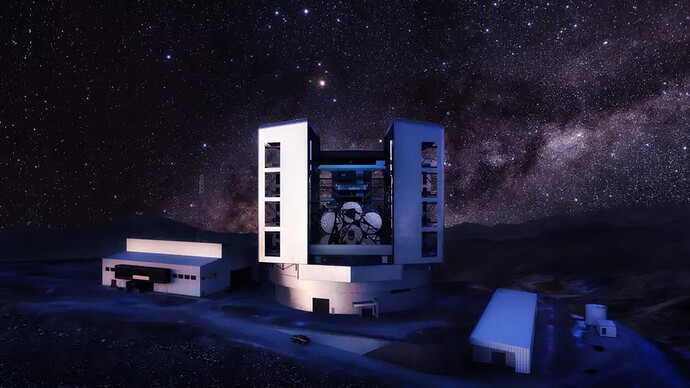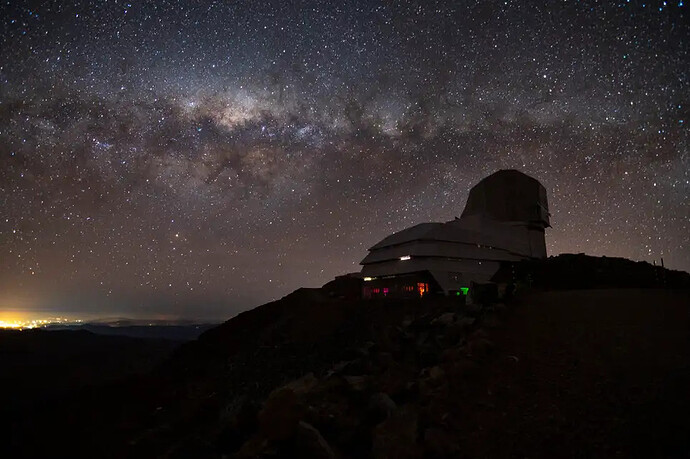lo choro ahora es ver que info empieza a sacar el telescopio, aparte que a la nasa le conviene las noticias mediaticas para que los gringos al final les suelten mas presupuesto
Y las primeras capturas?
no llevó el palo selfie
he leido en algunos lados que se viene una nueva gen de baterias que podrian tener un mayor desempeño y menor tamaño, no hay mucha info pero seria la raja
3 a 4 meses va a demorar alinear y ajustar los espejos.
Lo importante es que llegamos a este punto.
confirman el primer exoplaneta en el que se puede observar un campo magnetico (un campo magnetico protege a los seres orgánicos del bombardeo de partículas energéticas dañinas del sol)

Se vienen nuevos telescopios en Chile que van dar un salto en como se ve el universo, tendran varias veces mas la potencia que el Webb Telescope (desde 2027 aprox)
Extremely Large Telescope
The main mirror of the European Southern Observatory’s new telescope in Chile’s Atacama Desert will be even larger than that of the Thirty Meter Telescope, at 39 meters (128 feet) across. The telescope is set to become the largest visible and infrared light telescope in the world, succeeding the ESO’s Very Large Telescope, and will gather 100 million times more light than the human eye. The telescope’s scientific goals include the study of exoplanets (and the possibility that some could host life), black holes, galactic evolution, and the earliest days of the universe. The telescope’s first light is expected in 2027.
GIANT MAGELLAN TELESCOPE
When finished, the Giant Magellan Telescope will peer at the cosmos from a perch in Chile’s Atacama Desert, a famously good location for astronomical observations. The 12-story-tall optical-infrared telescope will use seven primary mirrors (each over 27 feet across) to focus light from deep space; according to the telescope’s website, it is four times more powerful than the Webb Telescope and 10 times more powerful than Hubble. It will make use of various instruments to study exoplanets and potential biosignatures in their atmospheres, as well as galactic evolution, gravitational waves, and objects that are easy to see in near-infrared, like planetary systems. According to Smithsonian, the telescope is expected to be operational by 2029.
Legacy Survey of Space and Time
The Legacy Survey of Space and Time (formerly Large Synoptic Survey Telescope) also makes use of the clear skies of Chile’s Atacama desert. This telescope features the largest digital camera ever built, a 3.2-billion-pixel behemoth that will collect 15 terabytes of data on the brightness, location, shapes, and colors of objects in the night sky every night. The idea is to image a huge swath of the sky with such frequency that astronomers will effectively have a stop-motion movie of the observable universe, in unprecedented resolution. While other telescopes focus on specific objects in the sky, LSST will capture it all—giving a spatial context to the work of all other telescopes.
Al fin veremos a dios 
Listo para ir a alcohuaz.

![]()
Les recomiendo la serie For All Mankind de AppleTV. Es sobre la carrera espacial pero plantea la pregunta de qué hubiera pasado si la USSR la hubiera ganado y no se hubiera destruido. Justamente trata sobre lo de arriba.
Gringos culiaos. Solo ellos pueden hacer la wea que quieran. Me recuerda cuando corea prueba un cohete. ![]()
La hipocresía pa grande.
amiccos hoy biden va a mostrar la primera foto a color del telescopio WEBB
Ojalá que a Biden no le de un taldo en vivo y revele la existencia de los aliens ![]()
fixed
Ya estan entre nosotros ![]()
Le dará un taldo y dirá que es una foto de su familia ![]()


